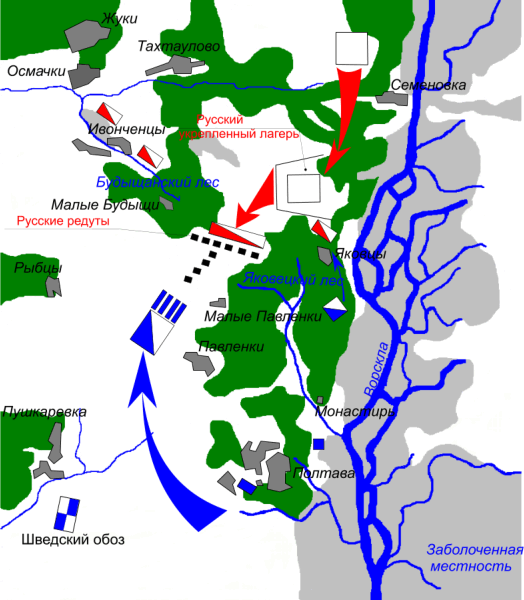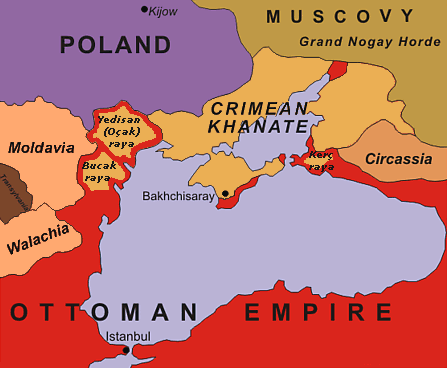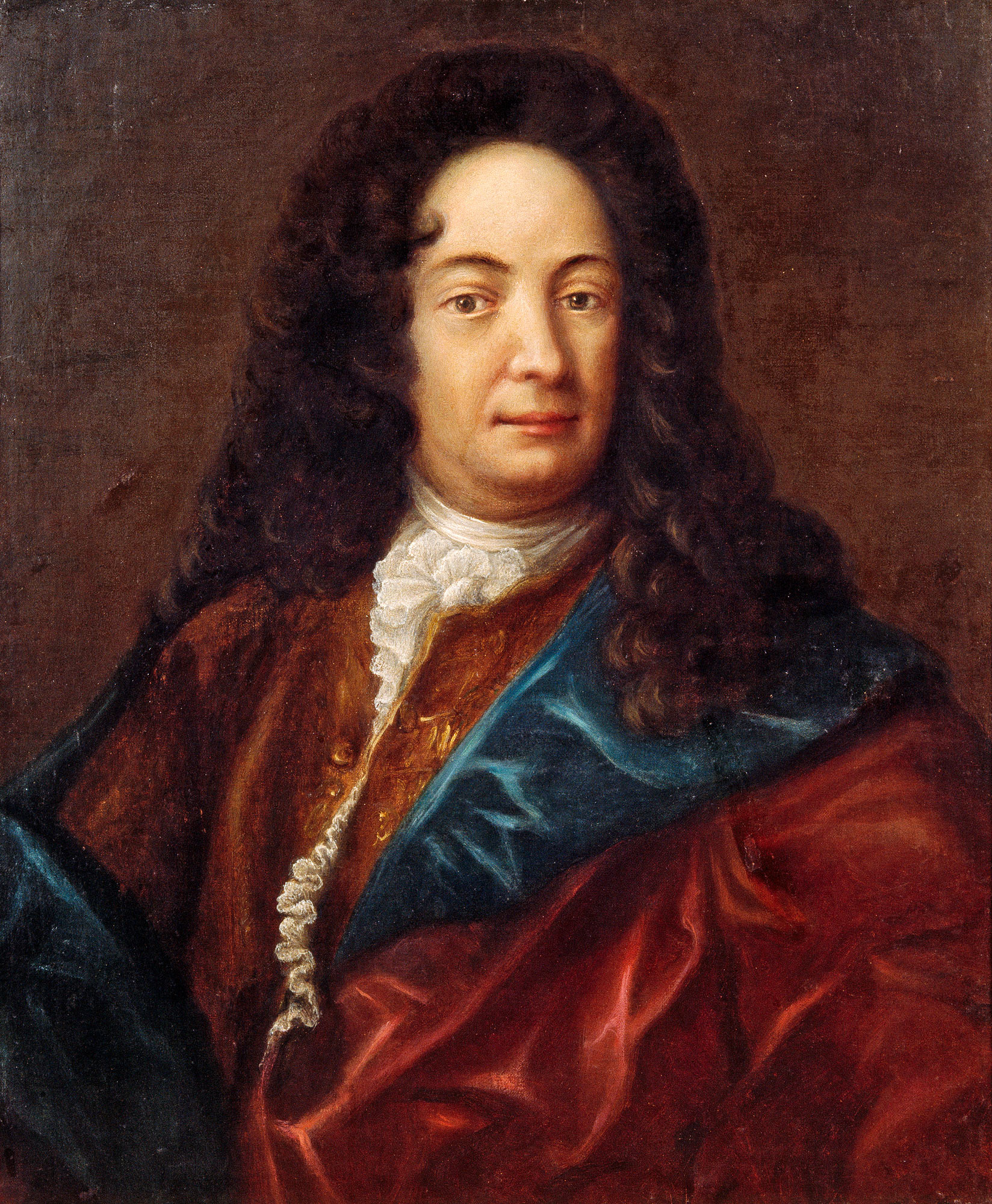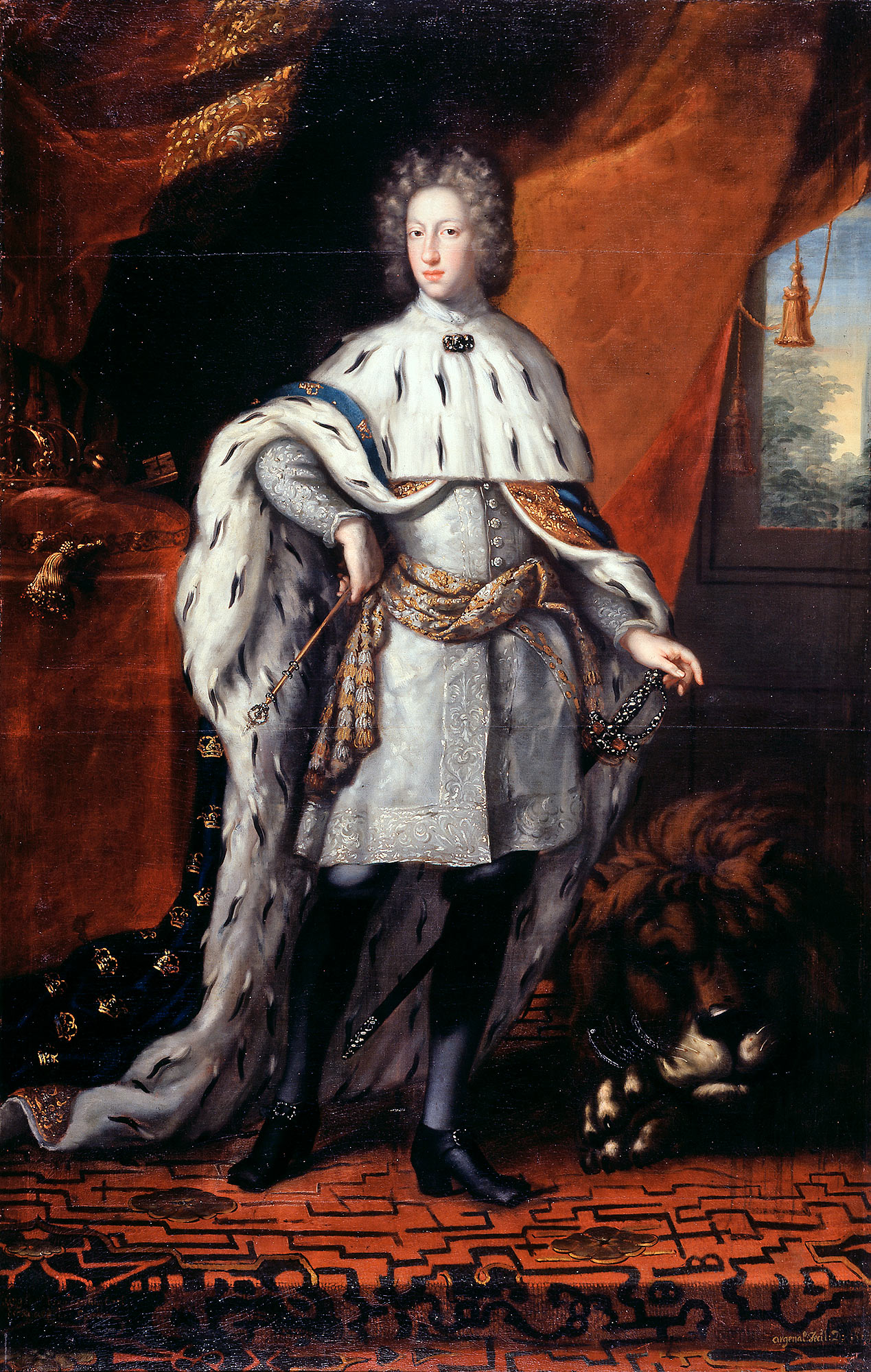|
Battle Of Napue
The Battle of Napue, or the Battle of Isokyrö (Storkyro), was fought on 19 February 1714 ( O.S.) / 2 March 1714 ( N.S.) at the villages of Napue and Laurola, located in the Isokyrö parish of the Swedish Empire (modern-day Finland). The battle took place between the Swedish Empire and the Tsardom of Russia and was the final land battle of the Finnish campaign in the Great Northern War. The Swedish detachment, consisting almost entirely of Finnish troops, was defeated by the numerically superior Russian forces. As a result, all of Finland fell under Russian military occupation for the remainder of the war—a seven-year period of hardship known in Finland as the Great Wrath. Prelude By 1703, Russian forces had reached the inner parts of the Gulf of Finland, and founded the city of Saint Petersburg. Since the Swedish main army was engaged in Poland and later in Russia, Sweden was hard pressed to defend its Baltic territories. After the Battle of Poltava, Russia seized all of L ... [...More Info...] [...Related Items...] OR: [Wikipedia] [Google] [Baidu] |
Great Northern War
In the Great Northern War (1700–1721) a coalition led by the Tsardom of Russia successfully contested the supremacy of the Swedish Empire in Northern Europe, Northern, Central Europe, Central and Eastern Europe. The initial leaders of the anti-Swedish alliance were Peter the Great, Peter I of Russia, Frederick IV of Denmark, Frederick IV of Denmark–Norway and Augustus II the Strong of Electorate of Saxony, Saxony–Polish–Lithuanian Commonwealth, Poland–Lithuania. Frederick IV and Augustus II were defeated by Sweden, under Charles XII, and forced out of the alliance in 1700 and 1706 respectively, but rejoined it in 1709 after the defeat of Charles XII at the Battle of Poltava. George I of Great Britain and the Electorate of Hanover joined the coalition in 1714 for Hanover and in 1717 for Britain, and Frederick William I of Prussia, Frederick William I of Brandenburg-Prussia joined it in 1715. Charles XII led the Swedish army. Swedish allies included Holstein-Gottorp, sev ... [...More Info...] [...Related Items...] OR: [Wikipedia] [Google] [Baidu] |
Battle Of Poltava
The Battle of Poltava took place 8 July 1709, was the decisive and largest battle of the Great Northern War. The Russian army under the command of Tsar Peter I defeated the Swedish army commanded by Carl Gustaf Rehnskiöld. The battle would lead to the Swedish Empire losing its status as a European great power and also marked the beginning of Russian supremacy in eastern Europe. During the course of six years in the initial stages of the war, King Charles XII and the Swedish Empire had defeated almost all participants in the anti-Swedish coalition, which initially consisted of the Polish-Lithuanian Commonwealth, Denmark-Norway and the Tsardom of Russia. The latter, under , was the only one still fighting. Charles therefore chose to invade Russia in the autumn of 1707 and march towards Moscow with a large Swedish army. However, the campaign was complicated by harsh weather conditions and by Russian scorched earth tactics and surprise attacks, which forced Charles to interr ... [...More Info...] [...Related Items...] OR: [Wikipedia] [Google] [Baidu] |
Russo-Turkish War (1710–1711)
The Russo-Turkish wars ( ), or the Russo-Ottoman wars (), began in 1568 and continued intermittently until 1918. They consisted of twelve conflicts in total, making them one of the longest series of wars in the history of Europe. All but four of these wars ended in losses for the Ottoman Empire, which was undergoing a period of stagnation and decline. Conversely, they showcased the ascendancy of the Russian Empire as a significant European power after Peter the Great oversaw extensive modernization efforts in the early 18th century. Ultimately, however, the end of the Russo-Turkish wars came about with the dissolution of the two belligerents' respective states as a consequence of World War I: the Russian Empire collapsed in 1917 and was ultimately succeeded by the Union of Soviet Socialist Republics in 1922; while the Ottoman Empire was partitioned between 1918 and 1922 and succeeded by the Republic of Turkey in 1923. History Initial and intermediate phases (1568–1739) ... [...More Info...] [...Related Items...] OR: [Wikipedia] [Google] [Baidu] |
Peter I Of Russia
Peter I (, ; – ), better known as Peter the Great, was the Tsar of all Russia from 1682 and the first Emperor of all Russia from 1721 until his death in 1725. He reigned jointly with his half-brother Ivan V until 1696. From this year, Peter was an absolute monarch, an autocrat who remained the ultimate authority and organized a well-ordered police state. Much of Peter's reign was consumed by lengthy wars against the Ottoman and Swedish empires. His Azov campaigns were followed by the foundation of the Russian Navy; after his victory in the Great Northern War, Russia annexed a significant portion of the eastern Baltic coastline and was officially renamed from a tsardom to an empire. Peter led a cultural revolution that replaced some of the traditionalist and medieval social and political systems with ones that were modern, scientific, Westernized, and based on radical Enlightenment. In December 1699, he introduced the Julian calendar, and in 1703, he introdu ... [...More Info...] [...Related Items...] OR: [Wikipedia] [Google] [Baidu] |
Battle Of Helsingborg (1710)
The Battle of Helsingborg was the last major engagement of the Great Northern War to take place on Swedish soil. It resulted in a decisive victory of a Swedish force of 14,000 men under the command of Magnus Stenbock against a Danish force of equal strength under the command of Jørgen Rantzau, ensuring that Denmark's final effort to regain the Scanian territories that it had lost to Sweden in 1658 failed. The battle was fought on 10 March 1710 in the province of Scania, just outside the city of Helsingborg, and directly on the Ringstorp heights just north-east of the city.''Svenska slagfält'', Lars Ericson, Martin Hårdstedt, Per Iko, Ingvar Sjöblom och Gunnar Åselius, Wahlström & Widstrand 2003, .Marklund (2008), pp. 206−208Eriksson (2007), pp. 205−209 Denmark–Norway had been forced out of the Great Northern War by the Treaty of Traventhal in 1700, but had long planned on reopening hostilities with the goal of reconquering the lost provinces of Scania, Halland and B ... [...More Info...] [...Related Items...] OR: [Wikipedia] [Google] [Baidu] |
Magnus Stenbock
Count Magnus Stenbock (22 May 1665 – 23 February 1717) was a Swedish field marshal (''Fältmarskalk'') and Privy Council of Sweden, Royal Councillor. A commander of the Caroleans, Carolean Army during the Great Northern War, he was a prominent member of the Stenbock family. He studied at Uppsala University and joined the Swedish Army during the Nine Years' War, participating in the Battle of Fleurus (1690), Battle of Fleurus in 1690. After the battle, he was appointed lieutenant colonel, entered Holy Roman Empire, Holy Roman service as Adjutant General, and married Eva Magdalena Oxenstierna, daughter of statesman Bengt Gabrielsson Oxenstierna. Returning to Swedish service he received colonelcy of a regiment in Wismar, and later became colonel of the Kalmar Regiment, Kalmar and then Dalarna Regiment, Dalarna regiments. During the Great Northern War, Stenbock served under King Charles XII of Sweden, Charles XII in his military campaigns in the Baltic and Polish fronts. As dire ... [...More Info...] [...Related Items...] OR: [Wikipedia] [Google] [Baidu] |
Åland Islands
Åland ( , ; ) is an Federacy, autonomous and Demilitarized zone, demilitarised region of Finland. Receiving its autonomy by a 1920 decision of the League of Nations, it is the smallest region of Finland by both area () and population (30,541), constituting 0.51% of Finland's land area and 0.54% of its population. Its only official language is Swedish language, Swedish and the capital city is Mariehamn. Åland is situated in an archipelago, called the Åland Islands, at the entrance to the Gulf of Bothnia in the Baltic Sea. It comprises Fasta Åland, on which 90% of the population resides, and about 6,500 Skerry, skerries and islands to its east, of which about 60–80 are inhabited. Fasta Åland is separated from the coast of Roslagen in Sweden by of open water to the west. In the east, the Åland archipelago is Geographic contiguity, contiguous with the Archipelago Sea, Finnish archipelago. Åland's only land border is located on the uninhabited skerry of Märket, which it ... [...More Info...] [...Related Items...] OR: [Wikipedia] [Google] [Baidu] |
Stockholm
Stockholm (; ) is the Capital city, capital and List of urban areas in Sweden by population, most populous city of Sweden, as well as the List of urban areas in the Nordic countries, largest urban area in the Nordic countries. Approximately 1 million people live in the Stockholm Municipality, municipality, with 1.6 million in the Stockholm urban area, urban area, and 2.5 million in the Metropolitan Stockholm, metropolitan area. The city stretches across fourteen islands where Mälaren, Lake Mälaren flows into the Baltic Sea. Outside the city to the east, and along the coast, is the island chain of the Stockholm archipelago. The area has been settled since the Stone Age, in the 6th millennium BC, and was founded as a city in 1252 by Swedish statesman Birger Jarl. The city serves as the county seat of Stockholm County. Stockholm is the cultural, media, political, and economic centre of Sweden. The Stockholm region alone accounts for over a third of the country's Gros ... [...More Info...] [...Related Items...] OR: [Wikipedia] [Google] [Baidu] |
Denmark
Denmark is a Nordic countries, Nordic country in Northern Europe. It is the metropole and most populous constituent of the Kingdom of Denmark,, . also known as the Danish Realm, a constitutionally unitary state that includes the Autonomous administrative division, autonomous territories of the Faroe Islands and Greenland in the north Atlantic Ocean.* * * Metropolitan Denmark, also called "continental Denmark" or "Denmark proper", consists of the northern Jutland peninsula and an archipelago of 406 islands. It is the southernmost of the Scandinavian countries, lying southwest of Sweden, south of Norway, and north of Germany, with which it shares a short border. Denmark proper is situated between the North Sea to the west and the Baltic Sea to the east.The island of Bornholm is offset to the east of the rest of the country, in the Baltic Sea. The Kingdom of Denmark, including the Faroe Islands and Greenland, has roughly List of islands of Denmark, 1,400 islands greater than in ... [...More Info...] [...Related Items...] OR: [Wikipedia] [Google] [Baidu] |
Charles XII Of Sweden
Charles XII, sometimes Carl XII () or Carolus Rex (17 June 1682 – 30 November 1718 Old Style and New Style dates, O.S.), was King of Sweden from 1697 to 1718. He belonged to the House of Palatinate-Zweibrücken, a branch line of the House of Wittelsbach. Charles was the only surviving son of Charles XI of Sweden, Charles XI and Ulrika Eleonora the Elder. He assumed power, after a seven-month caretaker government, at the age of fifteen. In 1700, a triple alliance of Denmark–Norway, Electorate of Saxony, Saxony–Polish–Lithuanian Commonwealth, Poland–Lithuania and Tsardom of Russia, Russia launched a threefold attack on the Swedish protectorate of Holstein-Gottorp and provinces of Swedish Livonia, Livonia and Swedish Ingria, Ingria, aiming to take advantage of the Swedish Empire being unaligned and ruled by a young and inexperienced king, thus initiating the Great Northern War. Leading the Swedish army against the alliance, Charles won multiple victories despite being si ... [...More Info...] [...Related Items...] OR: [Wikipedia] [Google] [Baidu] |
Kexholm County
Kexholm County (, ) was a county of the Swedish Empire from 1634 to 1721, when the southern part was ceded to the Russian Empire in the Treaty of Nystad. The capital of the county was Kexholm (), which today is Priozersk. History The county was ceded to Sweden by Russia together with Ingria by the Treaty of Stolbovo in 1617. The county extended to the parishes of Lieksa in the north and of Suojärvi in the east. In the south and west, the county was bordered by Viborg and Nyslott County. Following the Great Northern War, southern and eastern parts were ceded to Russia in 1721, and the territory that remained was reconstituted into the County of Kymmenegård and Nyslott (, ), with the remainder of the Viborg and Nyslott County. In 1743 following a new conflict part of this county was also ceded to Russia in the Treaty of Åbo. The ceded parts of the County of Viborg and Nyslott and the County of Kexholm were at first part of the Saint Petersburg Governorate, but in 1 ... [...More Info...] [...Related Items...] OR: [Wikipedia] [Google] [Baidu] |
Viborg And Nyslott County
Viborg and Nyslott County (, ) was a county of the Swedish Empire from 1634 to 1721. The county was named after the castle towns of Viborg () and Nyslott (, literally ''New Castle''), today located in the towns of Vyborg in Russia and Savonlinna in Finland. The county was established in 1634 as Karelia County (, ), but in 1641 Nyslott County (, ) was broken out and made a separate entity. Remainder of Karelia County was now called Viborg County. In 1650 the counties were joined again as the Viborg and Nyslott County. Following the Great Northern War southeastern parts of the county were ceded to Russia in 1721, and the territory that remained was reconstituted into the County of Kymmenegård and Nyslott (, ), with the northern and western parts of County of Kexholm. In 1743 following a new conflict part of this county was also ceded to Russia in the Treaty of Åbo. The ceded parts of the County of Viborg and Nyslott and the County of Kexholm were at first part of the Saint ... [...More Info...] [...Related Items...] OR: [Wikipedia] [Google] [Baidu] |








